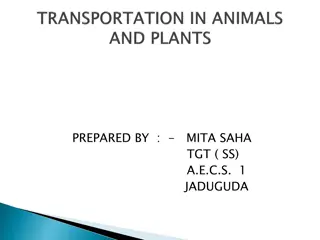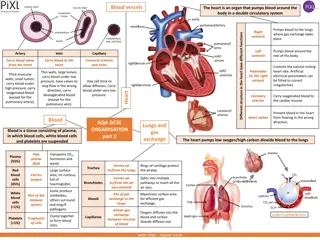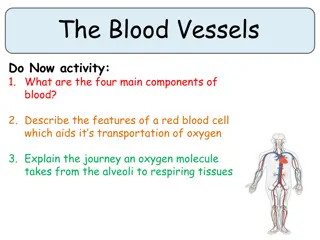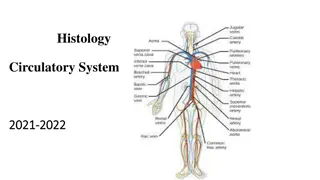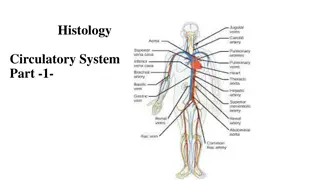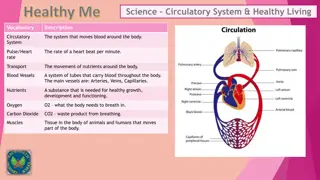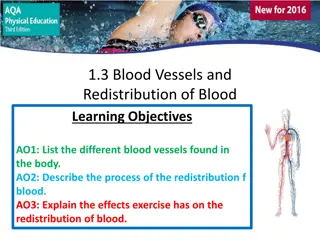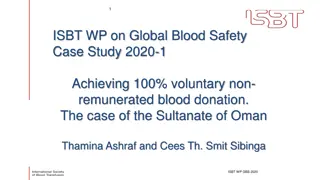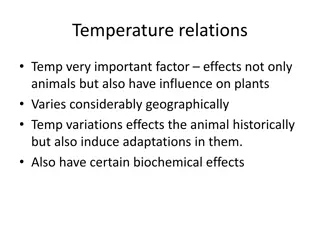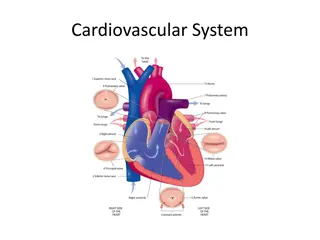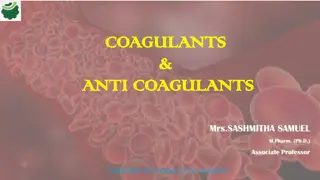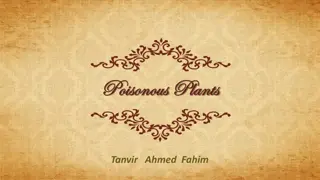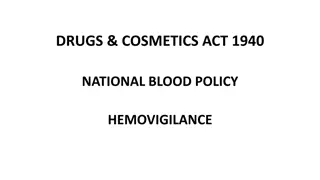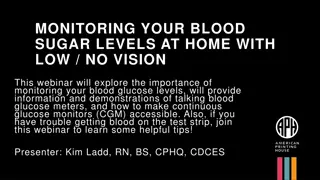Understanding Blood Circulatory System in Animals and Plants
Blood plays a crucial role in the transportation of substances in animals and plants. It carries essential nutrients, gases, and waste products throughout the body, maintaining vital functions through the circulatory system. Learn about blood components, circulatory pathways, and the importance of pulse rate in this comprehensive guide.
Download Presentation

Please find below an Image/Link to download the presentation.
The content on the website is provided AS IS for your information and personal use only. It may not be sold, licensed, or shared on other websites without obtaining consent from the author. Download presentation by click this link. If you encounter any issues during the download, it is possible that the publisher has removed the file from their server.
E N D
Presentation Transcript
PREPARED BY : - MITA SAHA TGT ( SS) A.E.C.S. 1 JADUGUDA
TRANSPORTATION IN ANIMALS AND PLANTS Transportation in animals and plants deals with the transport of food, water and gases to various parts of the body. Along with these , the transport of waste products towards kidney and intestine is introduced . This entire system of transportation is termed as a circulatory system.
BLOOD Blood is a fluid connective tissue which flows in blood vessels It has cells of various kinds called RBCs , WBCs and platelets. The fluid part of the blood is called plasma . RBC (Red blood cells)- contain a red pigment called haemoglobin Heamoglobin bind with oxygen and transport it to all the parts of the body The presence of heamoglobin makes blood appear red. WBCs (White blood cells ) fight against germs that may enter our body. Platelets helps in the clotting of blood.
FUNCTION OF BLOOD It transports substance like digested food from the small intestine to the other parts of the body It carries oxygen from the lungs to the cells of the body It also transports waste for removal from the body .
BLOOD CIRCULATORY SYSTEM It comparises of heart and blood vessels ( arteries , veins and capillaries ) Arteries -It carries oxygen rich blood from the heart to all parts of the body Veins - Veins are the vessels which carry carbon di oxide rich blood from all the parts of the body back to heart Capillaries Arteries divide into smaller vessels ,i.e arterioles . On reaching the tissues , they divide further into extremely thin tubes called capillaries . The capillaries join up to form vennules and further joins to form veins which empty into the heart
PULSE The throbbing sound due to the blood flowing in the arteries is called pulse PULSE RATE The number of beats per minute is called the pulse rate A resting person , usually has a pulse rate between 72 and 80 beats per minute
HEART The heart is a muscular organ which beats continuously to act as a pump for the transport of blood The heart is located in the chest cavity with the lower tip slighty tilted towards the left The heart has four chambers. The two upper chambers are called the atria (singular atrium ) and two lower chambers are called the ventricles. The partithion between the chambers helps to avoid mixing of blood rich in oxygen with the blood rich in carbon dioxide
The heart has four chambers. The two upper chambers are called the atria (singular atrium ) and two lower chambers are called the ventricles. The partithion between the chambers helps to avoid mixing of blood rich in oxygen with the blood rich in carbon dioxide
HEARTBEAT The walls of the chambers of the heart are made up of muscles . These muscles contract and relax rhythmically. This rhythmic contraction followed by its relaxation constitute a heartbeat.
THANK YOU HAVE A NICE DAY


